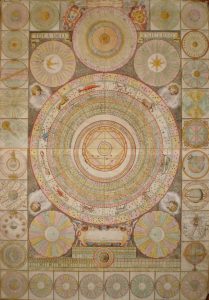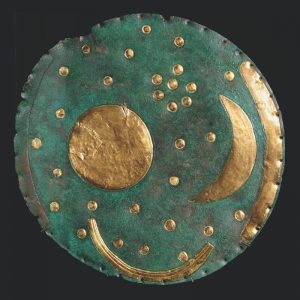The People Paradox
The synopsis that follows is something I wrote for my first-year creative writing students at Flinders University. It’s based on the result of a story-generation exercise (the creation of Nina Kiriki Hoffman) that uses a 20-sided dice to give you random elements (protagonist, antagonist, setting, goal, etc) that you then combine into a new story. Under the Science Fiction category, I rolled [Teacher] + [Guide] + [Another Dimension] + [Block] + [Money] + [Arrive] and this is what eventuated.
Will it ever become an actual story? Maybe, if I can think of a better title!
The People Paradox
 Arrogant trillionaire technologist Yuri Egge invites his former mentor, retired physics professor Dahlia Freer, along on the first human trial of his BLOCK* teleporter system, an invention that promises to revolutionize space travel. As they hop instantly across the universe, it becomes clear that BLOCK is based on a theory Dahlia herself developed long ago but abandoned, considering it to be unfeasible. Yuri stole the concept and has made it work. He shows her the working prototype in order to prove to her that he has surpassed her, as revenge for once giving him a failing grade. The pupil has become the master.
Arrogant trillionaire technologist Yuri Egge invites his former mentor, retired physics professor Dahlia Freer, along on the first human trial of his BLOCK* teleporter system, an invention that promises to revolutionize space travel. As they hop instantly across the universe, it becomes clear that BLOCK is based on a theory Dahlia herself developed long ago but abandoned, considering it to be unfeasible. Yuri stole the concept and has made it work. He shows her the working prototype in order to prove to her that he has surpassed her, as revenge for once giving him a failing grade. The pupil has become the master.
When they attempt to return, however, he discovers something terrible: Earth is gone, inexplicably turned to rubble in a cataclysmic solar event that seems to have happened millions of years ago.
Experiment reveals the terrible truth: instead of travelling across the universe as planned, they have been travelling between universes, ending up in one where humans never evolved.
In a panic, Yuri attempts to retrace their steps. Each new jump, however, launches them into yet another parallel universe, some in which humanity does exist but with radically different histories, others where Earth is inhabited by intelligent cephalopods, marsupials or communal insects, and even some where the sun itself failed to form. Trying to get home has potentially led them even further away.
The solution Dahlia proposes is to find an Earth that is close to the one they left behind and stop there, temporarily. If they can work out what went wrong with BLOCK and repair it, home will be within reach.
The Earth they settle on is not quite as advanced as the one they left. However, Yuri, by “inventing” things commonplace in his world, is able to quickly gather the money and resources required to begin again. All Dahlia has to do is perfect the theory.
Dahlia, however, quickly determines that, as per her original formulation, the theory will never allow BLOCK to work as Yuri wants it to. The problem is human consciousness: on a long jump with a living observer aboard, BLOCK will always shunt to another universe, thus avoiding paradoxes caused by faster-than-light travel.
 Yuri is convinced that Dahlia is still wrong and that he can solve the problem without her. He builds a new prototype, and although she attempts to convince him to stay in their new home, appealing to the part of him that desires the power and wealth he has regained on this less-advanced Earth, he says that he will leave anyway–and this time, she is not welcome to come with him. For continuing to believe him a failure, her punishment is never to return home.
Yuri is convinced that Dahlia is still wrong and that he can solve the problem without her. He builds a new prototype, and although she attempts to convince him to stay in their new home, appealing to the part of him that desires the power and wealth he has regained on this less-advanced Earth, he says that he will leave anyway–and this time, she is not welcome to come with him. For continuing to believe him a failure, her punishment is never to return home.
Yuri’s new prototype takes him back to the Earth they came from but kills him in the process, thus resolving any potential paradox. BLOCK is declared a failure by his former a colleagues and the truth of what happened to Professor Freer dies with him.
When Yuri does not return, Dahlia uses what remains of Yuri’s second fortune to make her new home a better place. Her conscience is clear. You can only do so much to save people from themselves.
Footnotes:
* Short for “Bi-Location Optical Conduit Kyphopomp” **
** from Greek kypho (bent) + pomp (send)
Images:
“Idea dell’Universo.” Vincenzo Coronelli, Italy, 1683 (Photo: WikiCommons/Public Domain)
Nebra Sky Disc, Germany, 1600 BC. (Photo: Rainer Zenz/WikiCommons CC BY-SA 3.0)
